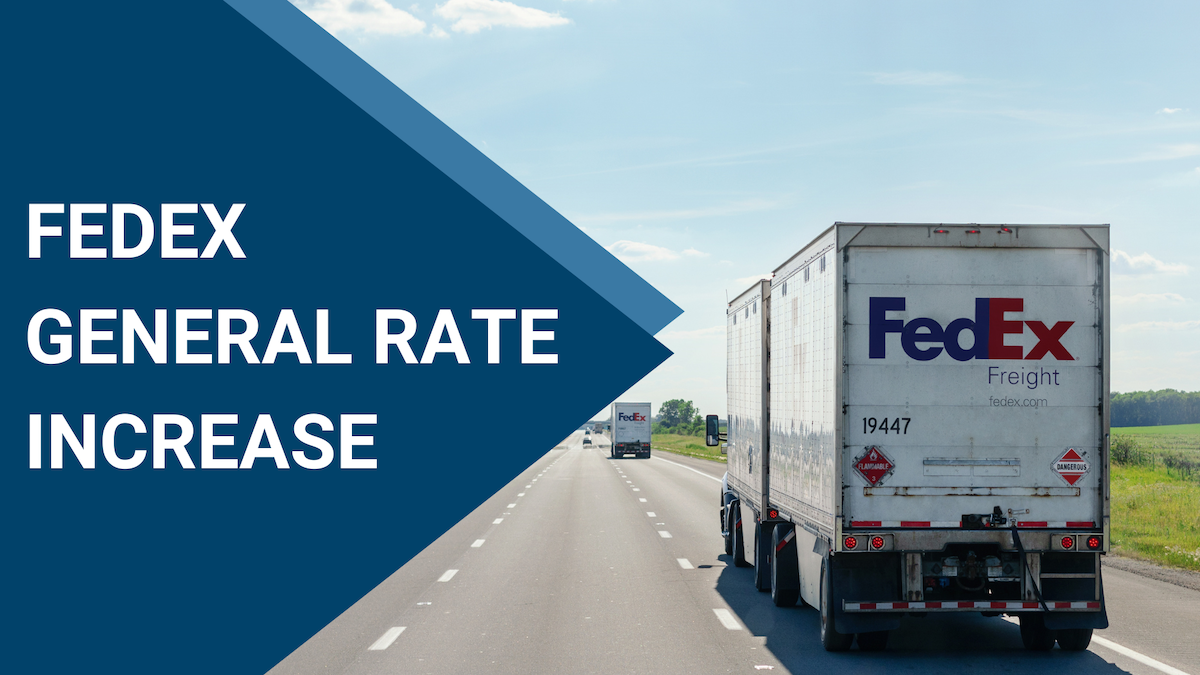If the early bird gets the worm, you might want to send FedEx a whole can of them.
On August 29, the carrier shared plans to increase its Express and Ground prices by an average of 5.9% in 2024 – beating UPS (which is raising its base rates by the same amount) to the punch by 10 days.
However, look a little closer, and you’ll spot a couple of notable differences. The first is that FedEx unveiled its news several weeks earlier than it ordinarily does. The second is that while FedEx has already followed up with specifics (including higher surcharges for 150+ line items), UPS still hasn’t.
So, what might this mean for you and your future parcel spend? We recently sat down with AFS Chief Analytics Officer Mingshu Bates to find out.
It’s often been said that timing is everything. In light of that, what should we read into FedEx’s decision to make its initial GRI announcement in August rather than September?
Over the past decade FedEx has clearly preferred to take a first-to-market approach with its annual pricing change announcements, and UPS has seemed content to let it do so.
However, thanks to this summer’s UPS strike threat and subsequent labor agreement negotiation, many people thought that UPS would try to make its GRI announcement first this year. That way it could put an end to speculation about how much higher its prices would have to rise.
FedEx may have moved its announcement timeline up for that reason – or to try to prevent UPS from coming up with a considerably higher base rate increase than 5.9%, given the general softness of parcel demand.
What’s your theory on why UPS hasn’t published all of its 2024 increases yet?
This year, UPS will need to start offsetting some significant additional expenses that FedEx doesn’t have, so it’s possible that the two carriers’ pricing policies may finally have to diverge, even if it’s just by a bit.
UPS could still be crunching the numbers and working on additional pricing changes, especially since FedEx removed the possibility of implementing another record rate increase. (After all, neither carrier wants to be the one that makes headlines by announcing a much higher base rate).
But only time will tell.
Yes. So, stay tuned, because it will be interesting to see how this whole story ultimately plays out.
Meanwhile, let’s look at some of the highlights from FedEx’s announcements.
The 5.9% average base rate hike, while lower than last year’s, is still the second highest (along with 2022’s) that FedEx has announced in ten years.
It’s also just that – an average. Most services and zones will see much higher increases than that across weight breaks, including Overnight packages across all zones, 2-Day Express and Express Saver shipments for longer zones.
What about surcharge increases?
On average these will go up by 9.8%. The lowest increase – 0.9% – is for Ground Residential, while the highest increase – 97% – is for Express Freight Inaccessible Dangerous Goods. These increases are very similar to what FedEx announced for last year.
How will Peak surcharges be impacted?
Technically speaking, they’re not “Peak” surcharges anymore. On September 4, FedEx rebranded them to “Demand” surcharges, probably because over the last few years, shippers have had to pay ”Peak” surcharge year-round.
So, since Demand surcharges are year-round, does this mean shippers won’t have to pay any extra Demand surcharges during the busier holiday season?
Unfortunately, not.
Among other things, FedEx shippers will have to pay an extra 6% more in Oversize Demand and Additional Handling Demand surcharges between October 2 and January 14. In addition, their Residential Demand surcharges could cost them anywhere from 5% to 8% more if they ship in excess of 20,000 additional weekly residential and Ground Economy packages from October 30 to January 14.
Is there anything else happening with Oversized and Additional Handling surcharges?
These will remain the surcharges that will get significant increases. FedEx’s Oversize surcharge will go up between 18.8% and 21%, while its Additional Handling surcharge will increase between 18% and 21%.
Wow! Why aren’t increases like these – or the almost 10% annual increase in surcharges – making headlines instead of the 5.9% base rate increases?
Well, if you were trying to put the most positive spin on things, which number would you try to emphasize? It’s all about casting both.
That’s why we always tell shippers to run a complete GRI analysis. By the time ALL factors are considered, their total cost increase will usually be considerably higher than the 5%, 6%, or 7% that makes headlines. And that’s important to know when they’re setting annual budgets or looking for opportunities to negotiate the best discounts and deals.
One last question: Where can we go to find out more?
If you’d like to view our full breakdown of the 2024 FedEx changes, you can download it here.
And if you want a more detailed analysis – or if you’d like some advice about how to mitigate the impact of the 2024 GRI on your business – drop us a line.
We know that trying to understand and navigate carriers’ latest rates and surcharges can be confusing and time-consuming. And we’ve got a full complement of veteran parcel experts and analysts who are ready to optimize your shipping costs while maximizing your efficiency.










